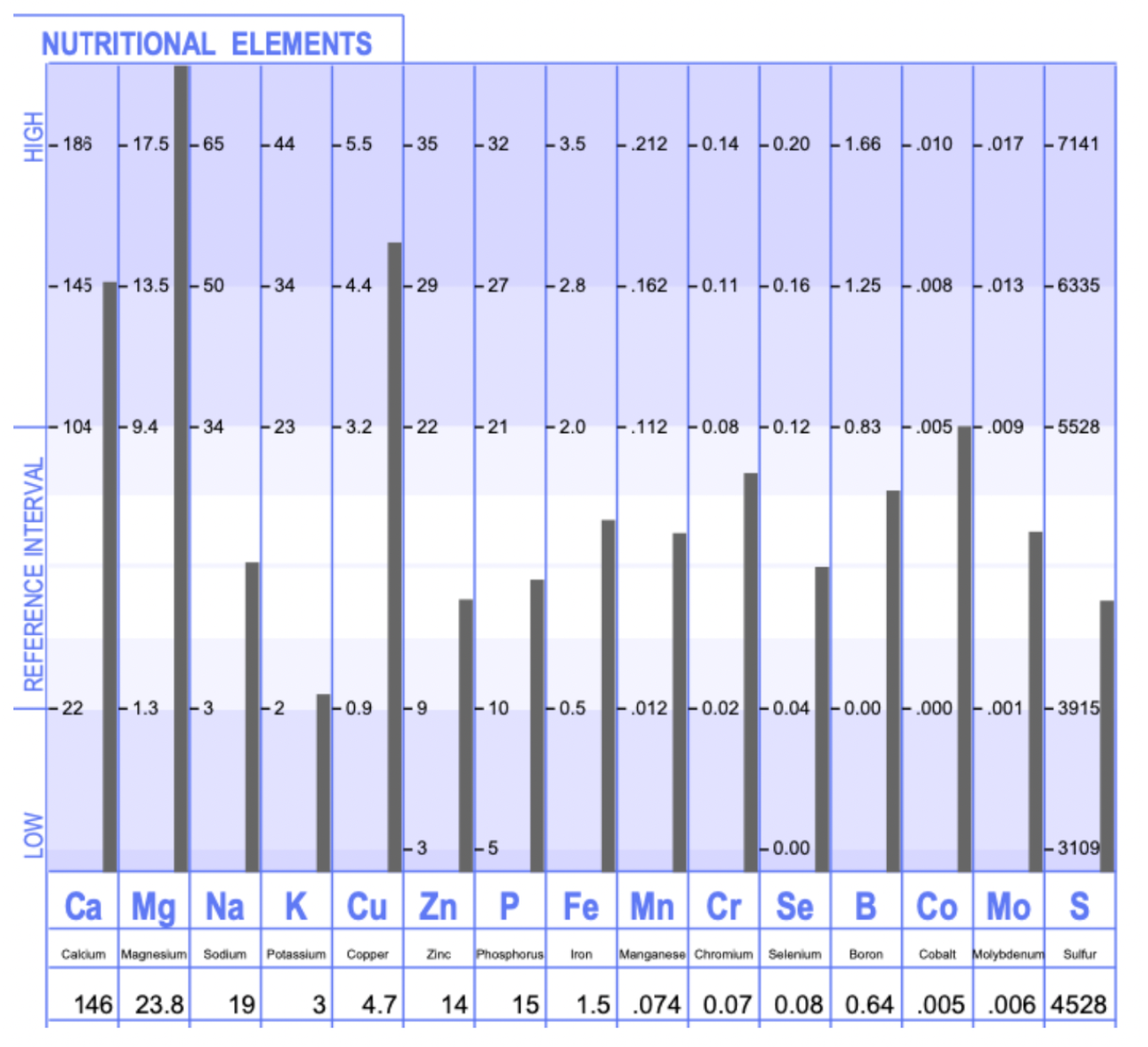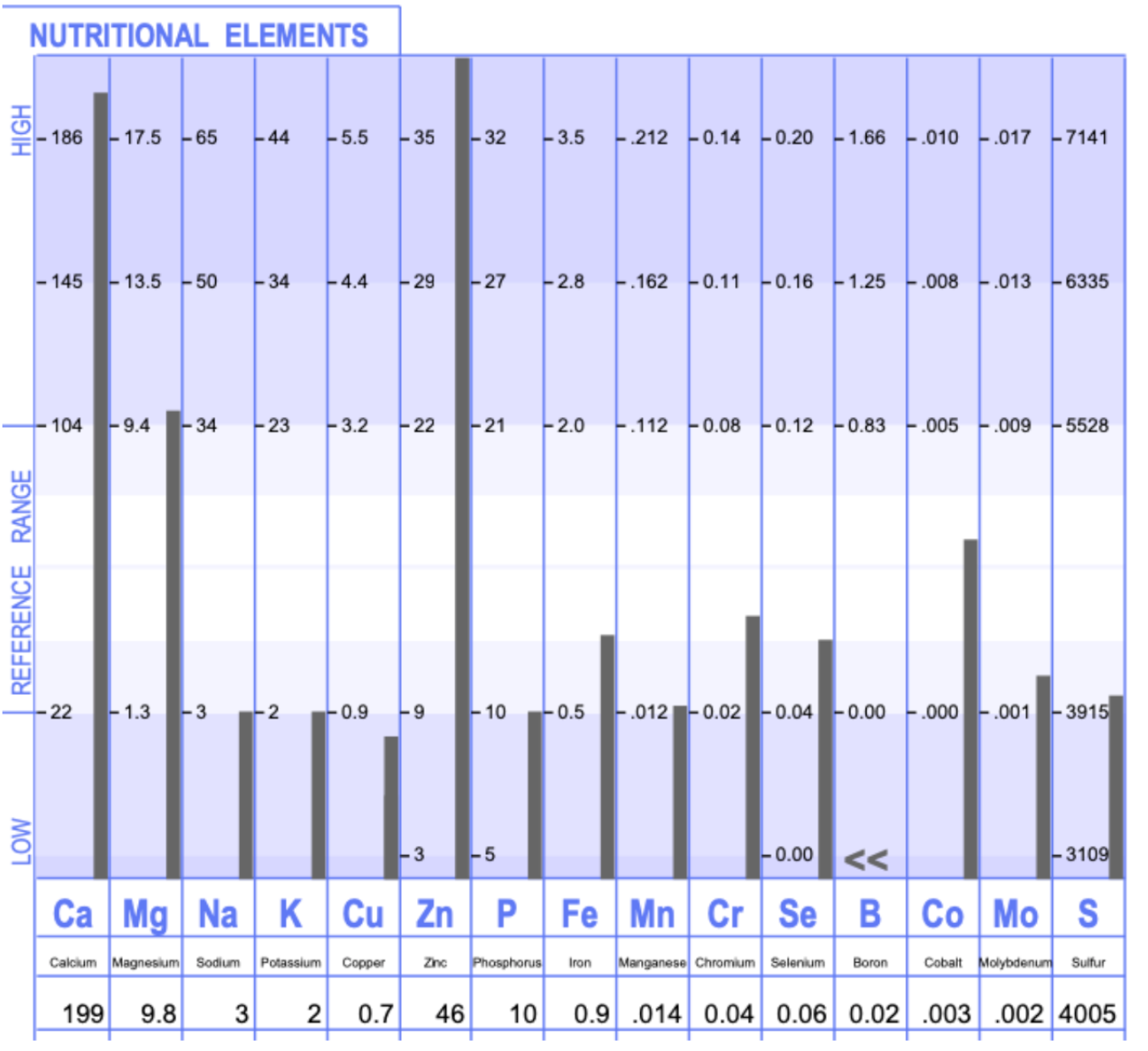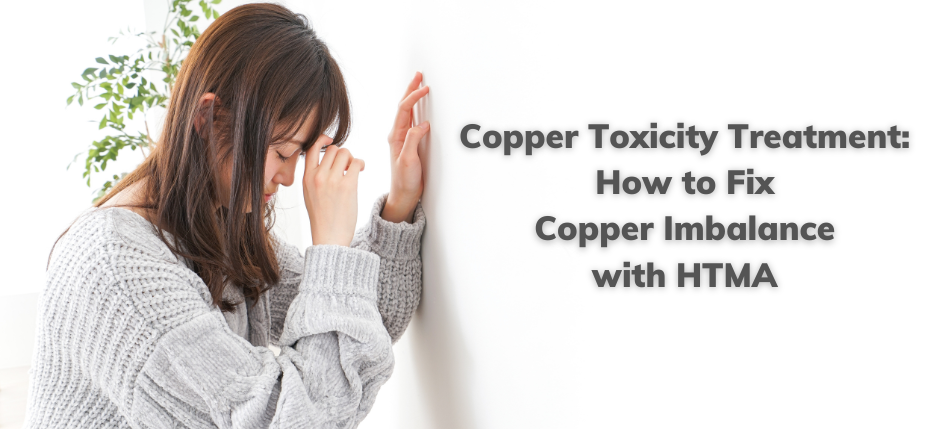Copper Toxicity Treatment: How to Fix Copper Imbalance with HTMA
For most of my life, I was even-keeled. I handled stress and conflict extremely well and didn’t really worry too much about what other people thought of me. And then little by little, I noticed things changing.
I started worrying about everything, to the point where I would rewrite an email 5 times over the course of 3 hours before sending it to make sure it was “perfect”.
I’d pace my house in the middle of the night due to horrible insomnia. I was exhausted all the time, no matter how much I slept. My boyfriend would look at me wrong and I’d snap at him. And in the middle of a bike ride (my favorite hobby), I’d break down crying out of nowhere.
I kept asking myself, “what is going on with me? where did this come from?”
What I later learned is that I had copper toxicity.
Once I healed myself from that, I became the chill, calm person that I previously was. All the other issues disappeared as well.
Copper toxicity is a common issue that we see through HTMA testing.
What is copper toxicity?

According to Rick Fischer, one of the world’s leading experts on copper toxicity, Copper toxicity is a buildup of stored bio-unavailable copper that, at excessive levels, causes physical and mental dysfunction. First, copper builds up in the liver and then when that’s full, it starts to build up in the brain.
The symptoms associated with copper toxicity are wide and varied. Some of the most common include chronic fatigue and adrenal depletion. Copper is also a very emotional mineral, so people who have copper toxicity tend to have a lot of emotional symptoms like anxiety, depression, irritability, and mood swings.
However, that’s not all of the symptoms copper toxicity can cause. Here’s an image that shows all of the common symptoms that are associated with copper toxicity:

How common is copper toxicity?
“Copper toxicity is a widespread yet one of the most misunderstood epidemics of our time, and is commonly a factor in many of today’s most prevalent conditions. It should therefore be a key route of investigation for any of the associated symptoms.” – Rick Fischer
Thus, it’s important to explore copper toxicity as a possibility if a client is exhibiting symptoms and has a history of exposure.
How do we get copper toxicity?
There are a lot of factors that can contribute to copper toxicity. Here are a few:
- Birth control of any kind, not just the copper IUD
- This is because estrogen raises copper in the body so even hormonal birth control can contribute
- Vitamins and supplements that contain copper
- Xenoestrogens or other chemicals that mimic estrogen such as plastic
- Drinking out of copper pipes
- Cooking with copper cookware
- Plant-based diets
- These are higher in copper and lower in zinc, causing an imbalance
- Insufficient bile production or a missing gallbladder
There are many others as well.
If you suspect that a client has copper toxicity, it’s extremely important to explore where they might be getting exposed and remove those. If not, that could continue to exacerbate the issue and make fixing copper issues much more difficult.
What does copper toxicity look like on an HTMA result?
There are two ways copper toxicity can show up on an HTMA–overtly and hidden.
Overt copper toxicity
Overt copper toxicity is much more obvious than hidden – it shows up elevated on the HTMA results. That’s the sign that the body is actively excreting copper.
Here’s a snapshot of one of my HTMAs when I was dealing with copper toxicity. As you can see, my copper is 4.7, whereas the ideal level is 2.2. This shows that my body was already moving copper out.

Hidden copper toxicity
Hidden copper is much less obvious and is far more common. Copper typically shows up low on an HTMA and we have to look for other clues that could point to hidden copper.
There are many clues we can look at for determining whether we have a hidden copper toxicity situation, including:
- Symptom presentation
- Calcium
- Sodium
- Potassium
- Exposure such as a history of birth control use (all types, frequent swimming pool use, etc.)
- And several ratios among the minerals
Here’s an example of a client who was exhibiting many symptoms of copper toxicity and had nearly all of the markers of hidden copper:

Regardless, when we suspect hidden copper, we use this more as a point of education for the client – focusing on mineral balancing and retesting is extremely important.
We do not do a full-on copper detox because the body is showing us that it’s not ready to move copper out. If we try to detox copper out of the body before it’s ready, it could cause a copper dump and that would make the person feel much worse.
What is a copper dump?

A copper dump can happen if you try to detox copper out of the body before it’s ready. What happens is that it gets stirred up and elevates in the blood. If the body is not optimized to handle this, it will just cause problems and then get deposited elsewhere in the body.
When a copper dump happens, it can lead to a worsening of both mental and physical symptoms, making the person feel way worse. So it is extremely important to educate yourself on the best approach to detoxing copper based on a person’s HTMA results and symptom presentation. It’s not something that can be forced or accelerated – their body will be the guide.
It’s also very important to educate your client on this so that if copper dump symptoms appear, they know they are going too fast for what their body can handle. This knowledge will allow them to back off immediately rather than try to power through and feel worse.
How do you fix copper toxicity?

There are different approaches to addressing copper toxicity based on the oxidation type shown on the HTMA and whether copper is overt or hidden. However, the initial steps in both approaches are the same:
1. Focus on balancing the macro minerals.
Calcium, magnesium, sodium, and potassium. This is always the foundational step.
2. Remove any exposure to copper.
A few examples of these include:
- Filtering water that comes from copper pipes
- Replacing copper cookware
- Removing a copper IUD or stopping hormonal birth control
- Cutting out foods and supplements containing copper
- Reducing swimming pool use
- Moving away from a plant-based diet and adding in more animal protein.
3. Support gallbladder and liver function
Copper is detoxed from the body through bile, and if someone isn’t producing enough bile in the liver or has gallbladder issues, they are going to have a harder time getting rid of excess copper.
Some suggestions for supporting healthy bile production include:
- Staying hydrated (bile is 85% water)
- Use bitters or apple cider vinegar
- Eat meals on a consistent schedule
- Use castor oil packs
4. Support digestion & healthy bowel movements
This is how toxins leave the body, so it’s extremely important to ensure digestion is supported and the person is having a regular bowel movement. If not, copper will end up just getting recirculated back through the body.
5. Nervous system support
Because of the stress copper toxicity puts on the body, incorporating tools to support calming the nervous system down is important. A few of these include medication, grounding, and breathwork.
Beyond the five foundational elements above, the approach to detoxing copper depends on whether or not a person is actively excreting copper. Because hidden copper toxicity is going to be the most common result on an initial test, let’s discuss that first.
Addressing Hidden Copper Toxicity

If someone is presenting with hidden copper toxicity, then it means the body is not strong enough to detox it, so the primary goal is to address the foundational pieces mentioned above.
Chronic fatigue is one of the most common symptoms of copper toxicity, so it’s important to support healthy adrenal function. You can do this by supporting sodium and potassium with supplementation and foods rich in these minerals. Adrenal glandular can also be used on a case-by-case basis.
Beyond that, you can attempt to gently nudge copper out of the body using chromium, vitamin C, or MSM. Note that some people may not tolerate any of these and they should only be done on a case-by-case basis.
You want to be sure you’re already supporting mineral balance before trying these strategies.
Finally, strongly encourage a retest after 3-4 months. This will give you the chance to check in on current mineral levels and to see if the body is starting to excrete copper.
Addressing Overt Copper Toxicity

If copper toxicity is overt in the HTMA, then the body is actively excreting, and we can try to be a bit more aggressive. However, if signs of a copper dump show up, it’s extremely important to back off immediately. The body will provide clues of what pace a person can fix their copper issues.
From a supplement standpoint, some additional supplements to include could be:
- Zinc
- Manganese
- Taurine
- Molybdenum
- Binders
- Zeolite
Not everyone will be able to tolerate all of these, especially zinc and manganese. You also want to be sure the HTMA is showing that these are needed. Thus, go slow and play around with the dosing to see if there’s a sweet spot for the person.
Additionally, other detox strategies like incorporating regular saunas and coffee enemas can help. These strategies are tools to help support the body in moving copper out of the body easier.
Then, be sure to retest every 3-4 months to check the mineral status and copper levels. This helps ensure that you’re supporting the body the best way possible based on current levels. You’ll want to retest until minerals are balanced and copper is completely detoxed.
How long does it take to fix copper imbalance?
This is a common question that a client asks when we’ve identified they have copper toxicity. It’s also an extremely important expectation to set with them as there is no quick fix to copper toxicity.
The answer to this question varies because it depends on the person, their oxidation rate, and how long they’ve been dealing with copper toxicity.
In general, if someone is a fast oxidizer and overtly copper toxic, it can take up to a year for them to completely detox copper from their body. Slow oxidizers tend to take much longer because of their oxidation rate. It can take at least a year, but as long as 3 or more. As an example, I was a slow oxidizer, and it took me 18 months to stop showing up as overtly copper toxic.
While this may feel like a long time, I can say from personal experience that it’s totally worth committing to the process. Also, clients often feel better before the HTMA shows that the copper toxicity is gone, which helps motivate them to keep going.
While it took me 18 months to fix copper, I started feeling noticeably better after 3 or 4 months. I wasn’t the only one who noticed the change. My longtime partner still brings up how different I was after detoxing it (in a good way).
Conclusion
It’s important to continue to retest the HTMA and commit to the process. If the client only tests occasionally and isn’t supporting their oxidation state, then it can stretch out the timeline to fixing copper toxicity.
In summary, the key things to remember when fixing copper toxicity are:
- Don’t rush it & be patient
- Focus on mineral balance and all the foundational elements that go along with that
- Stay committed to the process
Meet the author
Kim Heintz is a licensed therapist and coach with over 20 years of experience helping individuals and organizations reach their full potential. She holds a Bachelor’s degree in Psychology from Indiana University and a Master’s degree in Social Work from the University of Illinois. Kim is also a Certified Professional Coach through the International Coach Federation.
Kim’s approach to therapy and coaching is holistic and client-centered, taking into account each person’s unique experiences, values, and goals. She draws on a variety of evidence-based techniques, including cognitive-behavioral therapy, mindfulness-based stress reduction, and positive psychology.
In addition to her work as a therapist and coach, Kim is also an author and speaker. She has written several articles and a book called “Get Your Life Back: A Twelve-Week Journey to Overcome Stress, Anxiety, and Depression.” Kim has also given presentations and workshops on a variety of topics related to mental health and personal development.
Overall, Kim Heintz is a highly skilled and compassionate therapist and coach who is dedicated to helping individuals and organizations thrive.
Find Kim on several social media platforms, including Facebook, Twitter, Instagram, and YouTube. Her social media pages provide additional insights into her work and may contain valuable resources for personal development and mental health. You can also contact Kim directly through email at kim@kimheintz.com or visit her website at www.kimheintz.com to learn more about her approach to therapy and coaching, as well as her speaking engagements and written work.




![[BEST OF] A Cautionary Tale About Your Niche](https://kendraperry.net/wp-content/uploads/2025/05/BEST-OF-A-Cautionary-Tale-About-Your-Niche-300x169.png)


